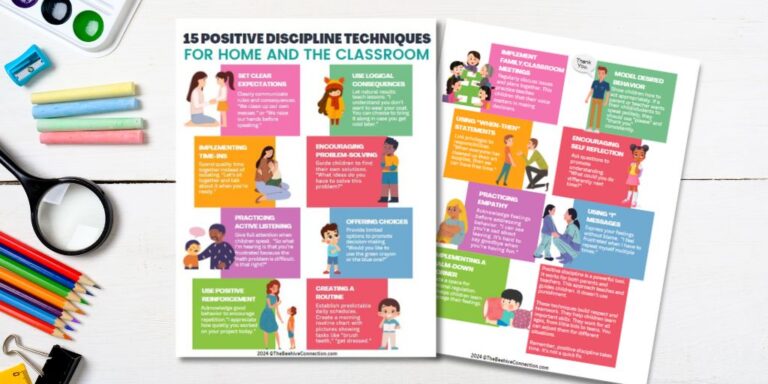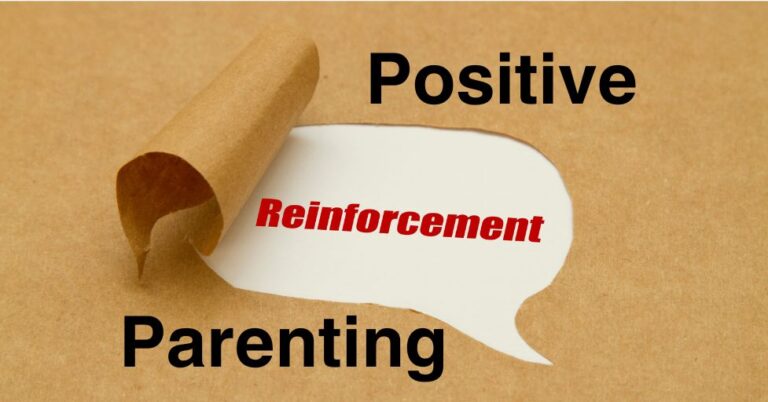7 Logical Consequences Examples – Positive Discipline in 2025
Disclosure: This post may contain affiliate links, meaning I may get a small commission if you decide to make a purchase through my links, at no cost to you.

Positive Discipline: 7 Logical Consequences Examples for 2024
Meta Description: Discover effective logical consequences examples using positive discipline techniques. Learn how to implement these strategies for better child behavior and stronger relationships.
Introduction to Logical Consequences Examples
Parenting in 2024 can be a rollercoaster ride, but what if I told you there’s a way to navigate those twists and turns with grace and effectiveness? Welcome to the world of positive discipline and logical consequences!
Did you know that 78% of parents who use positive discipline techniques report improved relationships with their children? It’s time to ditch the outdated punishments and embrace a method that teaches valuable life lessons.
In this guide, we’ll explore seven powerful examples of logical consequences that’ll transform your parenting game. Ready to become the cool, collected parent you’ve always dreamed of being? Let’s dive in!
Logical Consequences Example Definition in Positive Discipline

Let me tell you, when I first started teaching preschool, I was all about the time-outs (we called it the “power chair”) and taking away privileges. I thought that was the only way to get kids to behave. Boy, was I wrong! It wasn’t until I started to understand the power of logical consequences and positive discipline.
Definition of logical consequences and the difference between consequences and punishment
So, what are the consequences anyway? Well, they’re like the cooler, more effective cousin of punishment. Instead of just making a kid suffer for misbehaving, natural or logical consequences actually teach them something.
For example, when my oldest was 7, he kept leaving his bike in the driveway. Instead of yelling at him or taking away his TV time (which, let’s be real, would’ve just made him resent me), I explained that if he couldn’t remember to put his bike away, he wouldn’t be able to ride it the next day.
Boom! Logical consequence. What are the consequences for leaving his bike in the driveway? Not being able to use the bike the next day. The consequence must fit the behavior.
The difference is that punishments are often arbitrary and don’t really connect to the behavior. Logical consequences, on the other hand, are directly related to the action. They make sense to the kid, and that’s why they work.
The psychology behind logical consequences and their effectiveness

Now, I’m no psychologist, but I’ve seen firsthand how effective logical consequences can be. According to a study by the American Psychological Association, kids who experience logical consequences are more likely to develop self-discipline and make better choices in the future.
The reason? It’s all about that brain development, baby! When kids experience the natural and logical consequences of their actions, it helps them build those neural pathways that connect behavior with outcomes. It’s like they’re little scientists, experimenting and learning from the results.
I remember when my second child was constantly forgetting her gym clothes. Instead of bringing them to her every time, I let her experience the consequence of going without them. After a couple of times, she became way more responsible about remembering her gym clothes.
Key principles of positive discipline and how logical consequences fit in

Positive discipline isn’t just about consequences, though. It’s a whole approach to parenting and teaching that’s based on mutual respect and understanding. The key principles include:
- Teaching valuable life skills
- Encouraging cooperation
- Using kind and firm discipline simultaneously
- Focusing on solutions rather than punishment
Logical consequences fit into this framework perfectly because they help kids learn from their mistakes without damaging their self-esteem. It’s like, “Hey, kiddo, you messed up, but that’s okay. Here’s what happens when you make that choice, and here’s how we can do better next time.”
Benefits of using logical consequences for both parents and children
Let me tell ya, using logical consequences has been a game-changer for me as both a parent and an educator. For the kids, it helps them develop:
- Problem-solving skills
- Personal responsibility
- Better decision-making abilities
- Emotional regulation
And for us parents? Oh man, it’s been a lifesaver. We get:
- Less stress and frustration
- Fewer power struggles
- Improved communication with our kids
- A more peaceful home environment
I’ll never forget the day a student, who has special needs, finally understood the concept of logical consequences. He had been struggling with aggressive behavior, and we’d tried everything. But when we started using logical consequences consistently, it was like a light bulb went off. He started to make the connection between his actions and the outcomes, and his behavior improved dramatically.
Now, I’m not saying it’s always easy. There are still days when we wanna pull our hair out and send everyone home. But overall, using logical consequences has made parenting and teaching so much more rewarding.
So, if you’re feeling stuck in the punishment rut, give logical consequences a try. Trust me, your future self (and your kids) will thank you!
Example 1: Parenting Natural Consequences Examples for Forgotten Items
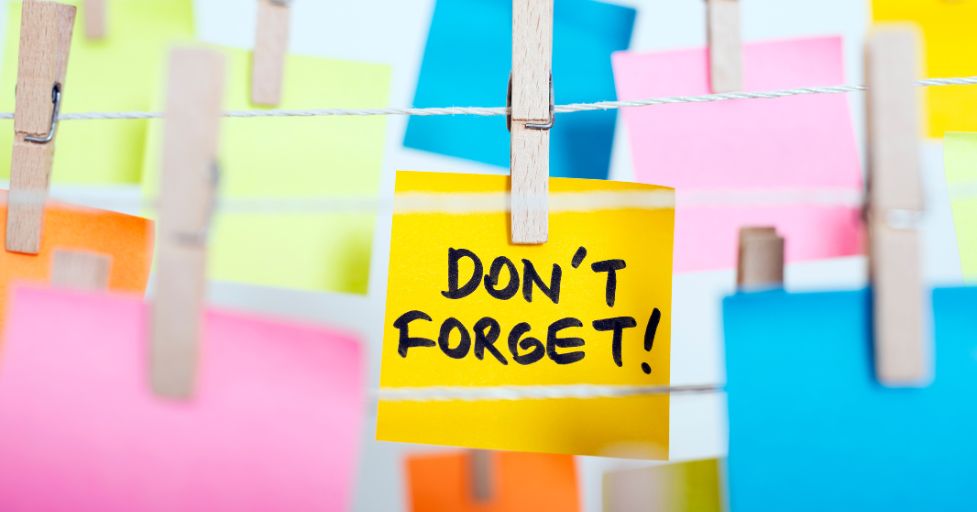
Before we move on, let’s talk about the natural consequences definition. Natural consequences are the certain results of a child’s behavior or decisions, that naturally occur without parental involvement. They aren’t imposed by parents or teachers, but are the direct outcome of the child’s behavior or actions.
Oh boy, do I have a story for you about forgotten items! As a mom of four and a former preschool teacher, I’ve seen my fair share of left-behind lunches, forgotten homework, and misplaced permission slips. But let me tell you about the time my seventh-grader, kept leaving (and losing) his coat at school, in the bathroom at Target, and countless other places.
Scenario: Child leaves coat everywhere
So there we were, three weeks into winter, and my son had already left or lost his coat four times. I was getting calls from the school office, and honestly, I was starting to feel like a total failure as a parent. I mean, how hard is it to keep your coat with you, right?
But here’s the kicker – every time my son left or lost his coat, we would spend time looking for it. If I found it, I would drop everything and bring it to him. If we didn’t find it, I would buy him a new one. I thought I was being a good mom, but really, I was just enabling him to be forgetful. Something had to change.
How to implement the logical consequence example
That’s when I decided to try using natural consequences. The next time my son left or lost his coat somewhere, I didn’t bring it to him. Yep, you heard me right. I let him go without his coat.
Now, before you call child services on me, let me explain. I had already talked to his teacher about my plan, and we made sure my son wouldn’t freeze (I’m not a monster). I gave the school an old coat of mine for just these situations. It wasn’t cool (I mean it was mine after all), but he wouldn’t freeze in the harsh winter weather.
The key here was communication. I sat down with my son and explained that from now on, if he forgot he lost his coat, he’d have to wear one of my old ones.
Teaching responsibility and problem-solving skills

You know what? It worked like a charm. He came up with a plan to help himself remember his coat and not leave it lying around. The best part, he never lost or left his coat anywhere ever again. It was amazing to see him take ownership of the problem and find a solution.
According to a study by the University of Pennsylvania, children who are allowed to experience natural consequences show improved decision-making skills and increased responsibility. And let me tell you, I saw this firsthand with Trevor.
Tips for parents to resist the urge to rescue
Now, I know what you’re thinking – “But I can’t just let my kid freeze!” Trust me, I get it. That urge to swoop in and save the day is strong. But here are some tips that helped me resist the rescue urge:
- Remember the long-term goal: We’re raising adults, not just managing kids. Sometimes short-term discomfort leads to long-term growth.
- Prepare in advance: Talk to the school about their backup lunch policy. Knowing your child won’t starve makes it easier to step back.
- Empathize, but don’t fix: When my son came home upset about the his missing coat, I listened and validated his feelings. But I didn’t apologize or promise to buy him a coat next time.
- Celebrate successes: The first week my son remembered to pick up his coat, we had a special dessert to celebrate. Positive reinforcement works wonders!
- Be consistent: It’s tempting to make exceptions, but consistency is key. Stick to your guns, even when it’s tough.
Look, I’m not gonna lie – letting your kid face the music of their forgetfulness isn’t easy. There were days I felt like the meanest mom on the planet. But seeing my son’s growing sense of responsibility and problem-solving skills made it all worth it.
So, if you’re struggling with a forgetful kiddo, give natural consequences a shot. It might just be the game-changer you need. And remember, we’re all in this parenting gig together. You’ve got this!
Example 2: Logical Consequences Example for Misuse of Electronics
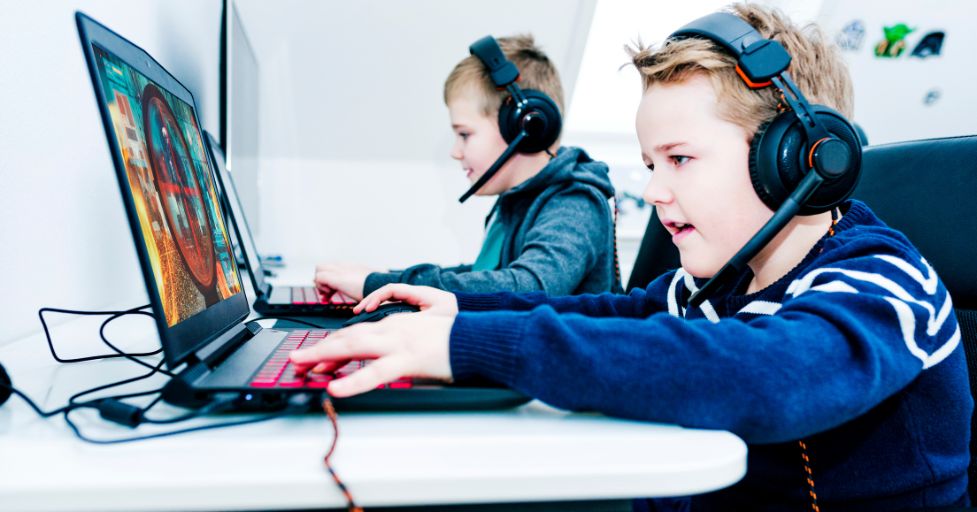
Okay, let’s talk about kids and electronics. If you’re anything like me, you’ve probably had your fair share of battles over screen time. I mean, sometimes I feel like I’m living in the Twilight Zone, where my kids turn into zombies the moment they pick up a tablet!
Scenario: Child uses tablet past agreed-upon time limit
So, picture this: It’s a Tuesday evening, and I’m trying to get dinner on the table. My 10-year-old, is supposed to be doing his homework, but I can hear the telltale sounds of his favorite game coming from the family room. I check the clock – yep, he’s 30 minutes past his agreed time. Cue the mom eye roll and deep sigh.
Now, in the past, I might have waited for him to come to the kitchen and start lecturing. But let me tell you, that approach was about as effective as trying to herd cats. All it did was create a lot of yelling and hurt feelings. Not exactly the peaceful home environment I was going for!
Implementing a consequence that relates to the misbehavior
That’s when I decided to try a different approach – logical consequences. Instead of flying off the handle, I sat down with my son and had a calm discussion about what happened. Together, we came up with a consequence that actually made sense: for every minute he went over video game time, he’d lose two minutes the next day.
Here’s the kicker – we used a timer when it went off, and he was done. No more arguments about “five more minutes” or “I just started playing!” The timer doesn’t lie, kiddo!
Teaching time management and respecting boundaries
Now, I’m not gonna lie – implementing this new system wasn’t all sunshine and rainbows. There were definitely some tears and protests at first. But you know what? It started working.
My son began setting timers for himself. He’d even ask me to remind him when his time was almost up. It was like watching a little lightbulb go off in his head as he started to understand the value of time management.
And let me tell you, this skill has been a game-changer. According to a study by the American Academy of Pediatrics, children who learn time management skills early are more likely to succeed academically and have better social relationships. Who knew that video game time could teach such an important life lesson?
But it’s not just about managing time. It’s also about respecting boundaries and keeping promises. These are skills that’ll serve our kids well into adulthood, whether they’re meeting work deadlines or showing up on time for a date night with their partner.
Related Article:
Strategies for consistent enforcement of tech rules

Now, I know what you’re thinking – “That sounds great, but how do you actually stick to it?” Trust me, I’ve been there. Consistency is key, but it’s also really freaking hard sometimes. Here are some strategies that have worked for our family:
- Use technology to your advantage: Most devices have built-in parental controls and screen time trackers. Use ’em! They’re like having a neutral third party to back you up.
- Make the rules visual: You can post the rules on the fridge. No arguments about “forgetting” the rules when they’re staring you in the face!
- Lead by example: This one’s tough, but important. If we want our kids to respect tech boundaries, we’ve gotta model it ourselves. (Guilty as charged – I’m still working on this one!)
- Be flexible, but firm: Life happens. Sometimes rules need to bend a little. But make sure your kids understand that bending doesn’t mean breaking.
- Celebrate successes: When my son went a whole week sticking to video game time, we had a special family movie night to celebrate. Positive reinforcement works wonders!
Look, I’m not pretending to have all the answers. There are still days when I feel like I’m losing the battle against the almighty screen. But implementing these logical consequences has made a world of difference in our home.
And here’s a little secret – it’s not just about the kids. I’ve found myself being more mindful of my own screen time too. Funny how teaching our kids can end up teaching us something too, huh?
So, if you’re pulling your hair out over video game time and tech tantrums, give logical consequences a shot. It might just bring a little more peace to your digital jungle. And remember, we’re all in this together. You’ve got this, parents!
Example 3: Logical Consequences Example of Positive Time-Out for Disruptive Behavior
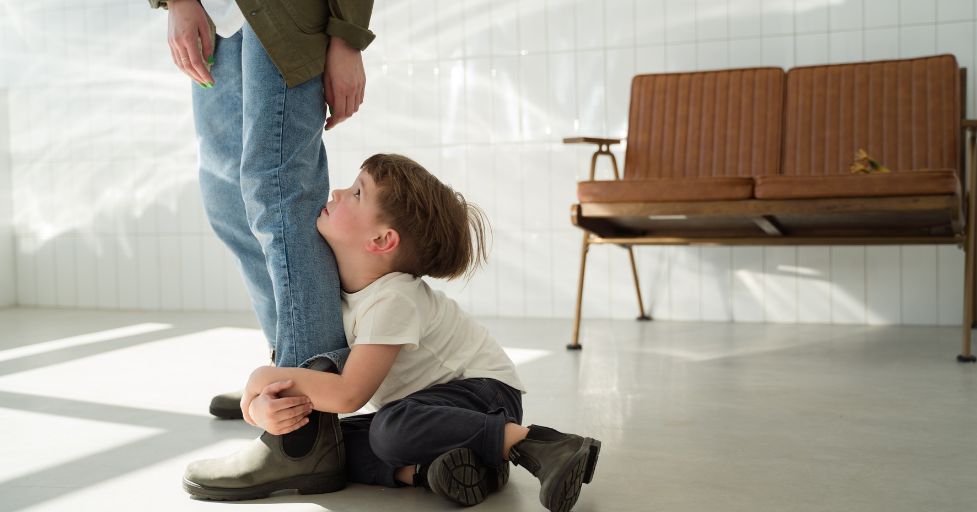
Alright, let’s talk about tantrums. If you’ve ever been a parent, teacher, or heck, even just existed near a toddler, you know the drill. One minute everything’s peachy, and the next? Full-on meltdown city.
Scenario: Child throwing a tantrum in a public place
Picture this: I’m at the grocery store with my youngest, who’s 4 at the time. We’re cruising down the cereal aisle when he spots the sugary stuff I never buy. Cue the whining, the begging, and finally – the full-blown tantrum. We’re talking screaming, crying, lying on the floor – the works. And of course, everyone’s staring. Talk about wanting the ground to open up and swallow you whole!
In my early parenting days, I might’ve just hightailed it out of there, red-faced and mumbling apologies. Or worse, given in to avoid the scene. But over the years, I’ve learned a thing or two about handling these situations. Enter the positive time-out.
How to use time-out as a tool for self-regulation, not punishment
Now, when I say “time-out,” I don’t mean the old-school “go sit in the corner and think about what you’ve done” approach. Nuh-uh. We’re talking about a positive time-out – a chance for kids to calm down and regain control.
In my daughter’s case, I scooped her up (no easy feat with a flailing 4-year-old, let me tell you) and found a quiet corner of the store. I sat down with her, held her close, and just breathed deeply. No lectures, no threats, just calm presence.
You see, according to the American Academy of Pediatrics, traditional punitive time-outs can actually increase stress and anxiety in children. But a positive time-out? It’s like hitting the reset button on their emotional state.
Teaching emotional intelligence and coping mechanisms

Once my daughter had calmed down a bit, we talked about her feelings. “You’re feeling really upset because you want that cereal, huh?” Naming emotions is huge for kids. It’s like giving them a map to navigate their feelings.
Then we practiced some simple coping strategies. We did some deep breathing – in through the nose, out through the mouth, like we’re blowing out birthday candles. We counted to ten. We even did a little progressive muscle relaxation, tensing and relaxing different parts of our bodies.
These might seem like small things, but they’re actually powerful tools for emotional regulation. A study by the Yale Center for Emotional Intelligence found that children who learn these skills early on have better academic performance and social relationships. Who knew a grocery store meltdown could be a learning opportunity?
Follow-up discussions to reinforce learning
Later that day, when we were both calm and the tantrum was a distant memory, we had a chat about what happened. I asked my daughter what she remembered about our “quiet time” in the store. We talked about different ways she could express her feelings next time she really wanted something.
We even role-played a bit. I pretended to be her wanting a toy, and she got to practice saying, “I really want that, but I understand we can’t buy it today.” Was it Oscar-worthy acting? Hardly. But it was a fun way to reinforce the lesson.
Here’s the kicker – the next time we went to the store, my daughter actually reminded me about our breathing exercises before we went in. Talk about a proud mama moment!
Now, I’m not saying this approach works like magic every single time. There are still moments when I feel like I’m herding cats while juggling flaming torches. But overall, using positive time-outs has been a game-changer for us.
And let me tell you, as someone who works with special needs young adults now, these skills are crucial. The emotional regulation techniques we teach our kids? They’re the foundation for the coping strategies these young adults use every day.
So, next time your little one is having a five-alarm meltdown in aisle five, remember – it’s not just about getting through the moment. It’s a chance to teach valuable life skills. Deep breaths, mama (or papa). You’ve got this!
Oh, and pro tip? Always keep a small, quiet toy or book in your bag for distraction. Sometimes, a little redirection goes a long way. Trust me, your future self will thank you!
Example 4: Logical Consequences Example for Not Completing Chores
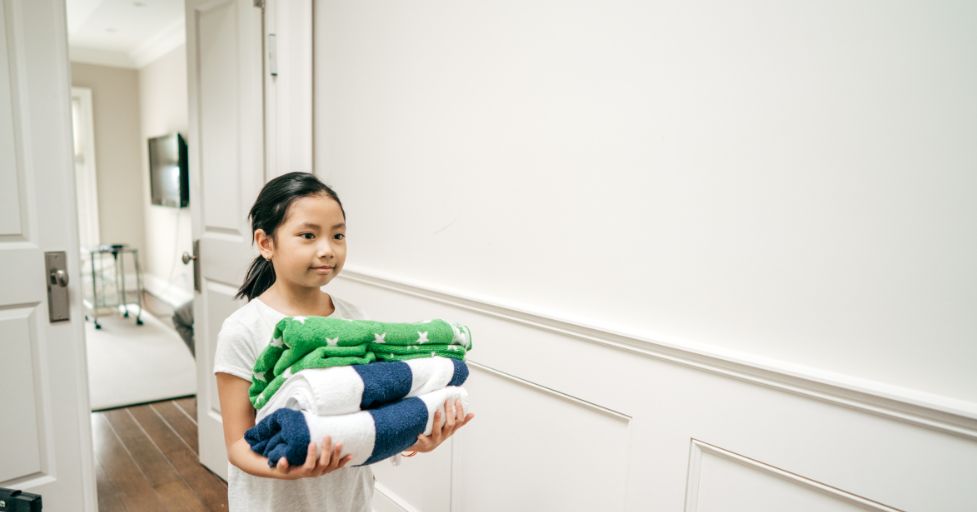
Oh boy, let me tell you about the Great Chore Wars in our house. With four kids, you’d think I was running a small cleaning company, but nope – it was more like herding cats through a obstacle course of dirty laundry and dishes!
Scenario: Child consistently neglects assigned household tasks
My second child, was the queen of “forgetting” to do her chores. I swear, that kid could remember every Harry Potter character but somehow couldn’t recall that the trash needed taking out. It was driving me up the wall!
One week, I noticed the living room was still a mess, even though it was her job to tidy it. Her excuse? “I was gonna do it later, Mom!” Yeah, right. Later never seemed to come in her world.
Creating a consequence that relates to the undone work
Now, in the past, I might’ve just grounded her or taken away something. But let’s be real – that wasn’t teaching her anything except how to be sneakier about avoiding chores.
So, I put on my thinking cap and came up with a logical consequence. I told my daughter that since she didn’t have time to clean the living room, she must not have time for her favorite TV show either. The time she would’ve spent watching TV now had to be used to do the chore she’d skipped.
You should’ve seen her face! It was like I’d told her Christmas was canceled. But here’s the kicker – it worked.
Teaching responsibility and the importance of contribution
The beauty of this approach is that it teaches kids that their contributions matter. According to a study by the University of Mississippi, children who regularly participate in household chores have better relationships, achieve more academically, and are more empathetic. Who knew picking up socks could be so important?
I explained to my that our family is like a team. When one person doesn’t do their part, it affects everyone. We talked about how mom and dad go to work to earn money for the family, and how doing chores is her way of contributing.
It wasn’t an overnight miracle, mind you. There were still days when I felt like I was talking to a brick wall. But slowly, surely, my daughter started to get it. She even started noticing when things needed doing without being asked!
Using family meetings to discuss and adjust chore systems
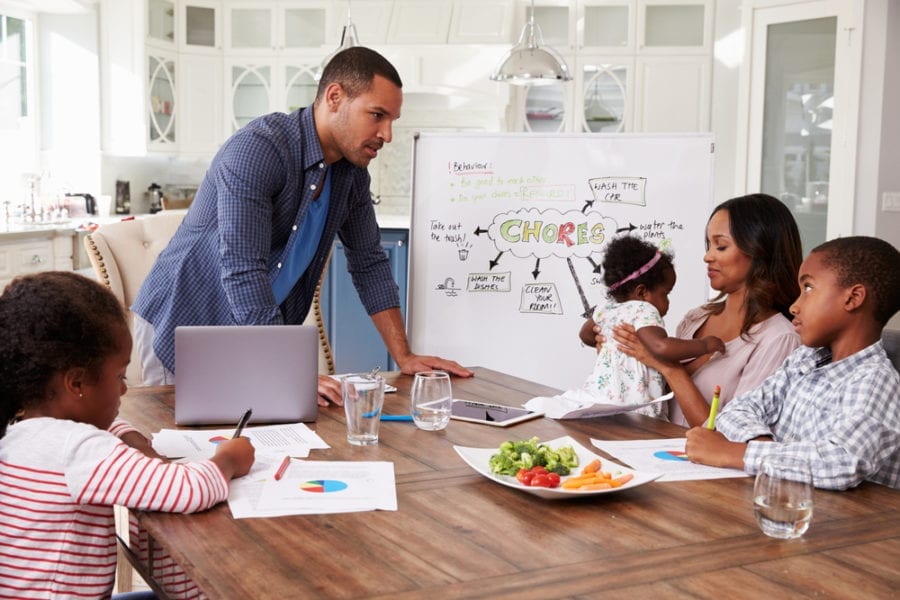
Now, here’s where my experience as a preschool teacher came in handy. I decided to implement weekly family meetings to discuss our chore system. And let me tell you, it was a game-changer!
Every Sunday evening, we’d sit down as a family and talk about how the week went. What worked? What didn’t? We’d adjust chores based on everyone’s schedules and abilities. It wasn’t always smooth sailing – there were arguments and eye rolls aplenty. But it opened up a dialogue that we’d never had before.
We even made a big chore chart for the fridge. Each kid got to choose stickers to mark their completed tasks. It sounds silly, but even my teenagers got into it. There’s something satisfying about putting a sticker on that chart!
One thing I learned from working with special needs young adults is the importance of clear expectations and routine. So we made sure each chore was clearly defined. No more vague “clean your room” – we’re talking specifics like “make your bed” and “put dirty clothes in the hamper.”
Here’s a pro tip: rotate the chores regularly. It prevents boredom and helps kids learn different skills. Plus, it stops the “but I always have to do the gross chores” arguments.
Now, I’m not gonna lie and say our house is always spotless. With four kids, two cats, it’s more organized chaos than Martha Stewart perfection. But the improvement has been huge.
The best part? These skills stick with them. Just the other day, I was talking to my daugher, who’s now a young adult. She was thanking me for teaching her how to do chores. Apparently, she’s the only one at work who knows how to properly clean anything!
So, if you’re drowning in a sea of undone chores and kid excuses, give logical consequences and family meetings a try. It might just save your sanity – and teach your kids some valuable life skills in the process. Remember, we’re not just raising kids, we’re raising future adults. And trust me, their future roommates and partners will thank you!
Related Article:
Importance of Family Meeting and FREE Printables
Example 5: Natural Consequences Examples for Procrastination

Alright, let’s talk about procrastination. As a mom of four and a teacher, I’ve seen enough last-minute homework panic to last a lifetime. But there was this one time with my daughter Emma that really stands out.
Scenario: Child delays homework until the last minute
Picture this: It’s Sunday night, around 8 PM, my 12-year-old, comes to me with big puppy dog eyes. “Mom,” she says, “I just remembered I have a big project due tomorrow.” Cue the internal mom scream, right?
Now, this wasn’t the first time she had pulled the last-minute homework card. She’d been warned about procrastination before, but this time… this time was different. The project was a big one – a poster board presentation that she’d known about for weeks.
In the past, I might’ve jumped into superhero mom mode – staying up all night, cutting and pasting while my daughter dozed off on the couch. But I realized that wasn’t doing her any favors in the long run.
Allowing the child to experience the stress of time pressure
So, I took a deep breath and said, “Okay, what’s your plan?” The look on her face was priceless – a mix of shock and panic. She was expecting me to swoop in and save the day.
Instead, I let her experience the natural consequence of her procrastination – the stress and pressure of a looming deadline. Was it hard to watch? You bet. My mama bear instincts were screaming at me to help. But I knew this was a valuable lesson she needed to learn.
According to a study by the American Psychological Association, 80% of students admit to procrastinating regularly. By allowing Emma to face the consequences of her actions, I was actually helping her develop crucial life skills.
Teaching time management and the value of planning ahead

As my daughter frantically worked on her project, we had a chat about time management. I showed her how to break big projects into smaller, manageable tasks. We talked about using a planner (something I wish I’d learned earlier in life!) and setting personal deadlines before the actual due date.
I shared my own experiences with procrastination – like the time I stayed up all night in college to help a friend finish a huge project and fell asleep during my lunch break at work. My daughter got a kick out of that story, and it helped her see that even adults struggle with this sometimes.
We also discussed the value of planning ahead. I explained how doing a little bit each day not only reduces stress but often leads to better quality work. It’s like the difference between cramming for a test and studying a little each night – your brain just works better when it’s not under extreme pressure.
Supporting without rescuing: the parent’s role
Now, here’s where it gets tricky. How do you support your kid without swooping in to save the day? It’s a fine line, let me tell you.
I made sure my daughter knew I was there if she needed me. I helped her gather supplies and offered encouragement. But I didn’t do the work for her. When she got frustrated and wanted to give up, I reminded her that she could do hard things.
We set a cutoff time – 10 PM – after which she’d have to go to bed, finished or not. This was tough love, but it mimicked real-world consequences. In the working world, sometimes you just have to turn in what you have when the deadline hits.
My daughter worked her little heart out that night. The project wasn’t her best work, but it was done. And you know what? She learned more from that experience than any lecture I could’ve given her.
The next day, my daughter came home from school exhausted but proud. She’d presented her project and, while it wasn’t perfect, she’d done it all herself. We had a great conversation about how she felt during the process and what she’d do differently next time.
Since then, I’ve noticed a real change in how my daughter approached her schoolwork. She started using a planner and actually worked on big projects a little bit each day. Is she perfect? Nah. But she’s learning, and that’s what matters.
As parents, it’s so tempting to shield our kids from discomfort. But sometimes, the best thing we can do is step back and let them experience the natural consequences of their choices. It’s not always easy – trust me, I’ve had to sit on my hands more than once to stop myself from jumping in! – but it’s how they learn and grow.
So, next time your kiddo comes to you with a last-minute crisis, take a deep breath. Remember, you’re not just helping them with this one assignment – you’re teaching them valuable life skills that’ll serve them well into adulthood. And hey, maybe they’ll even thank you for it someday… a mom can dream, right?
Example 6: Logical Consequences Example for Disrespectful Communication

Oh boy, let me tell you about a time one of my good friend’s youngest, went through what I like to call his “attitude phase.” It was like someone had replaced her sweet girl with a snarky teenager overnight!
Scenario: Child uses rude language or tone with family members
Picture this: They’re all sitting around the dinner table, and she asks her daughter to pass the salt. Her response? An eye roll and a mumbled, “Why don’t you get it yourself? I’m not your servant.” Cue the shocked silence and my internal struggle for my friend not to lose her cool.
Now, in the past, she might’ve sent her to her room or taken away her phone privileges. But after years of studying positive discipline, she learned that these knee-jerk punishments don’t really teach much about respectful communication.
Implementing a consequence that addresses communication skills
So, my friend took a deep breath (trust me, I needed it) and said, “Sweety, that was disrespectful. In this family, we speak to each other with kindness. Since you’re having trouble with that right now, you’ll need to practice.”
Here’s where the logical consequence comes in. For the next week, the daughter of my friend had to make three specific, kind comments to each family member every day. And let me tell you, it was like pulling teeth at first! But you know what? It worked.
According to a study by the University of California, practicing kindness actually increases happiness and improves social connections. Who knew a little forced niceness could be so powerful?
Related Articles:
Tips to Tame Temper Tantrums from Toddlers to Teens
Alternative to Yelling for Calmer Parenting
How to Talk to Your Kids so They Will Really Listen
Teaching empathy and the impact of words on others

Now, this wasn’t just about making my friend’s daughter say nice things. It was about teaching her empathy and understanding the impact of her words. They had some great conversations during that week.
She shared stories from my work, how a kind word could brighten their entire day or how a harsh tone could trigger anxiety. They talked about how words can build people up or tear them down.
One exercise that really helped was when she asked her daughter to write down how she felt when someone spoke to her rudely versus kindly. Seeing those feelings on paper seemed to flip a switch for her.
Related Article:
Role-playing exercises to practice respectful communication

My friend started doing role-playing exercises as a family. They’d act out different scenarios – asking for help, expressing frustration, disagreeing with someone – and practice doing it respectfully.
At first, it felt super awkward and there was a lot of giggling. But you know what? It actually became kind of fun. They’d try to outdo each other with exaggerated politeness, which led to some pretty hilarious dinner conversations.
One game they played was “Rephrase It.” Someone would say something in a rude way, and another person had to rephrase it respectfully. It became a family challenge to come up with the most creative, polite ways to say things.
Now, I’m not gonna lie and say my friend’s daughter turned into an angel overnight. There were still plenty of eye rolls and grumpy moments. But there was a noticeable improvement in how she communicated, not just with her parents, but with her teachers and friends too.
The most surprising thing? The impact it had on the whole family. They all became more conscious of how they spoke to each other. My friend even caught herself a few times and had to “rephrase it“!
Make Logical Consequences Examples fun!
Here’s a pro tip: Make it a game. Kids (and let’s be honest, adults too) are more likely to engage if it’s fun. In our classroom, we started giving out “above and beyonds” for exceptionally thoughtful or polite communication. At the end of the week, the person with the most points got to choose the movie for family movie night.
Another thing that helped was setting up a “cool down corner” in our school. If anyone (including teachers!) felt they were about to say something unkind, they could go there to take a few deep breaths and collect their thoughts. It’s amazing how a little pause can prevent a lot of hurtful words.
One of the most powerful moments came about a month after my friend started all this. Her daughter came home from school and told her about a kid in her class who was being bullied. She said she stood up for the kid because she realized how much words can hurt. Talk about a proud mama moment!
So, if you’re dealing with a kid (or adult, for that matter) who’s struggling with respectful communication, give these strategies a try. It’s not always easy, and there might be some resistance at first. But stick with it. The payoff in improved family relationships and social skills is so worth it.
Remember, we’re not just teaching our kids how to talk – we’re teaching them how to connect with others, how to resolve conflicts, and how to be kind human beings.
Example 7: Logical Consequences Example of Collaborative Problem-Solving for Sibling Conflicts

Okay, let’s talk about sibling rivalry. As a mom of four, I’ve seen enough squabbles to last a lifetime! But there was this one summer that really took the cake. It was like World War III had broken out in our living room!
Scenario: Frequent arguments between siblings over shared resources
Picture this: It’s the first week of summer vacation. The kids are home all day, and suddenly, everything becomes a battle. Who gets to use the iPad first? Whose turn is it to choose the TV show? Why does she get the comfy spot on the couch? I swear, if I heard “Mom, she’s touching me!” one more time, I was gonna lose it!
The breaking point came when I found my two youngest, in a full-on tug-of-war over the last popsicle. I mean, really? A popsicle? That’s when I knew we needed a new approach.
Using family meetings to establish rules and consequences together
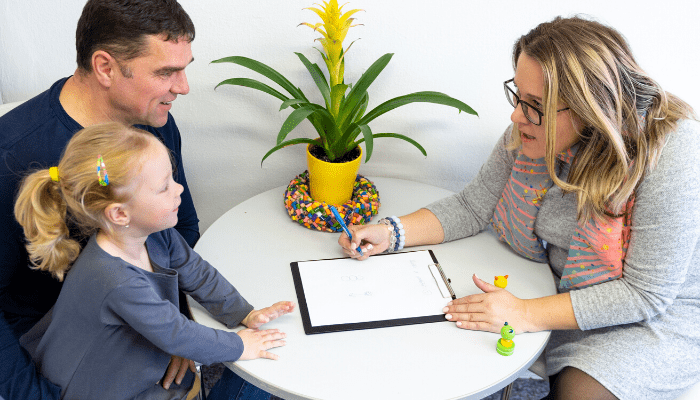
Now, I’ll be honest, my first instinct was to just lay down the law. “No more fighting or everyone loses screen time!” But then I remembered something I learned in my years studying positive discipline – kids are more likely to follow rules they help create.
So, we had a family meeting. I gathered everyone in the living room (bribed them with cookies, if I’m being totally honest) and explained that we needed to work together to solve this problem.
You should’ve seen their faces when I told them they’d be making the rules. It was like I’d just announced we were going to Disneyland!
We brainstormed together, and let me tell you, kids can be surprisingly creative problem-solvers when given the chance. We came up with a system for taking turns with TV show choices, and even a rotation for that coveted spot in the car.
But here’s the kicker – we also decided on consequences together. If someone broke a rule, they’d lose their next turn. It was simple, but because they came up with it themselves, they were way more invested in sticking to it.
Teaching conflict resolution and negotiation skills
Now, I’m not gonna lie and say all the fighting stopped overnight. But what did change was how the kids handled their conflicts. Instead of immediately running to me to referee, they started trying to work things out themselves.
We practiced using “I feel” statements. You know, instead of “You’re a jerk for taking my toy,” it became “I feel upset when you take my toy without asking.” It sounds cheesy, but it really helped them express their feelings without attacking each other.
We also introduced the concept of compromise. I shared a story from my work with special needs young adults about two students who always argued over a computer. They finally worked out a system where they’d split the time equally and even collaborated on projects. The kids loved that story and started looking for ways they could compromise too.
One tool that worked wonders was the “problem-solving wheel” we made. It had different strategies they could try when conflicts arose, like “take turns,” “share,” “walk away,” or “ask for help.” When an argument started, I’d just point to the wheel, and they’d have to choose a strategy to try before coming to me.
Related Article:
Tips for Sibling Rivalry Solutions
10 Steps to Successful Family Meetings FREE Family Meeting Bundle
Empowering children to be part of the solution

The most amazing part of this whole process was watching the kids take ownership of their conflicts. They started having their own little “family meetings” to work things out. It was adorable and kind of hilarious to watch them mimic our family meetings.
You can keep a “solutions journal” where the kids could write down or draw pictures of how they resolved conflicts. It can became a source of pride for them to add to it. Plus, it was great for parents to look back and see their progress.
One day, I overheard two of my kids negotiating over the last cookie. One said, “How about we split it in half?” and the other replied, “Okay, but I get to choose which half.” I almost cried with pride!
Now, I’m not saying it was all smooth sailing. There were still plenty of arguments and moments when I had to step in. But the frequency and intensity of the conflicts definitely decreased.
Here’s a fun fact: According to a study by the University of Virginia, siblings who learn to resolve conflicts in childhood have better relationships as adults and are more skilled at navigating workplace conflicts. So, we’re not just solving today’s popsicle crisis, we’re setting them up for future success!
One unexpected benefit? These skills started showing up in other areas of their lives. My oldest used his negotiation skills to work out a compromise with his teacher about a project deadline. And my second youngest successfully resolved a conflict with her best friend without any adult intervention.
So, if you’re drowning in sibling squabbles, give collaborative problem-solving a try. It takes some time and patience (and maybe a few bribes with cookies), but the payoff is so worth it. Not only do you get a more peaceful home, but you’re teaching your kids valuable life skills.
Remember, the goal isn’t to eliminate all conflicts – that’s not realistic. The goal is to give our kids the tools to handle conflicts constructively. And who knows? You might just find yourself learning a thing or two in the process. I know I did!
Related Articles:
Positive Discipline Techniques PDF for Home and the Classroom
Age-Related Positive Discipline Chart PDF
Positive Discipline Mistakes and How to Avoid Them
Positive Discipline in Everyday Teaching
Positive Discipline for Single Parents
Conclusion for Logical Consequences Examples
Congratulations! You’re now armed with seven powerful logical consequences example that’ll revolutionize your approach to positive discipline. Remember, the goal isn’t to make our kids’ lives harder, but to help them become responsible, empathetic, and capable adults.
As you implement these strategies, you’ll likely see not only improvements in behavior but also a stronger, more trusting relationship with your children. Isn’t that what we all want as parents? So, why not give it a try? Start with one example that resonates with you and watch the magic unfold. Your future self (and your kids) will thank you for taking this positive step towards a harmonious family life. Here’s to happy parenting this year and beyond!
FAQs with answers for your blog post on Logical Consequences Examples for Positive Discipline:
- Q: What’s the difference between punishment and logical consequences? (Keywords: punishment vs consequences, positive discipline methods)
A: Punishment is often arbitrary and unrelated to the behavior, while logical consequences are directly connected to the child’s actions. Logical consequences teach kids about the natural results of their choices, helping them learn responsibility.
- Q: How do I come up with appropriate logical consequences? (Keywords: parenting tips, discipline strategies)
A: Think about what naturally results from the behavior. For example, if a child doesn’t clean up toys, they might lose access to those toys for a day. The consequence should be related, respectful, and reasonable.
- Q: At what age can I start using logical consequences? (Keywords: child development, age-appropriate discipline)
A: You can start using simple logical consequences as early as toddlerhood (around 2-3 years old). Just keep them very basic and immediate. As kids get older, you can use more complex consequences and discuss the reasoning behind them.
- Q: How do I explain logical consequences to my child? (Keywords: communicating with kids, explaining discipline)
A: Use simple language and be clear about the connection between their action and the consequence. For example, “If you choose not to wear your coat, you might feel cold outside.” Then, follow through consistently.
- Q: What if logical consequences don’t seem to be working? (Keywords: troubleshooting discipline, parenting challenges)
A: Be patient – it takes time for kids to learn. Ensure the consequences are truly logical and consistently applied. If issues persist, consider other factors like the child’s understanding or if there are underlying problems to address.
GET FREE ACCESS TO OUR LIBRARY OF FREE PRINTABLES AND RESOURCES!
Enter Your Name and Email for FREE Access to our Library of FREE Home and Family Printables Series!


